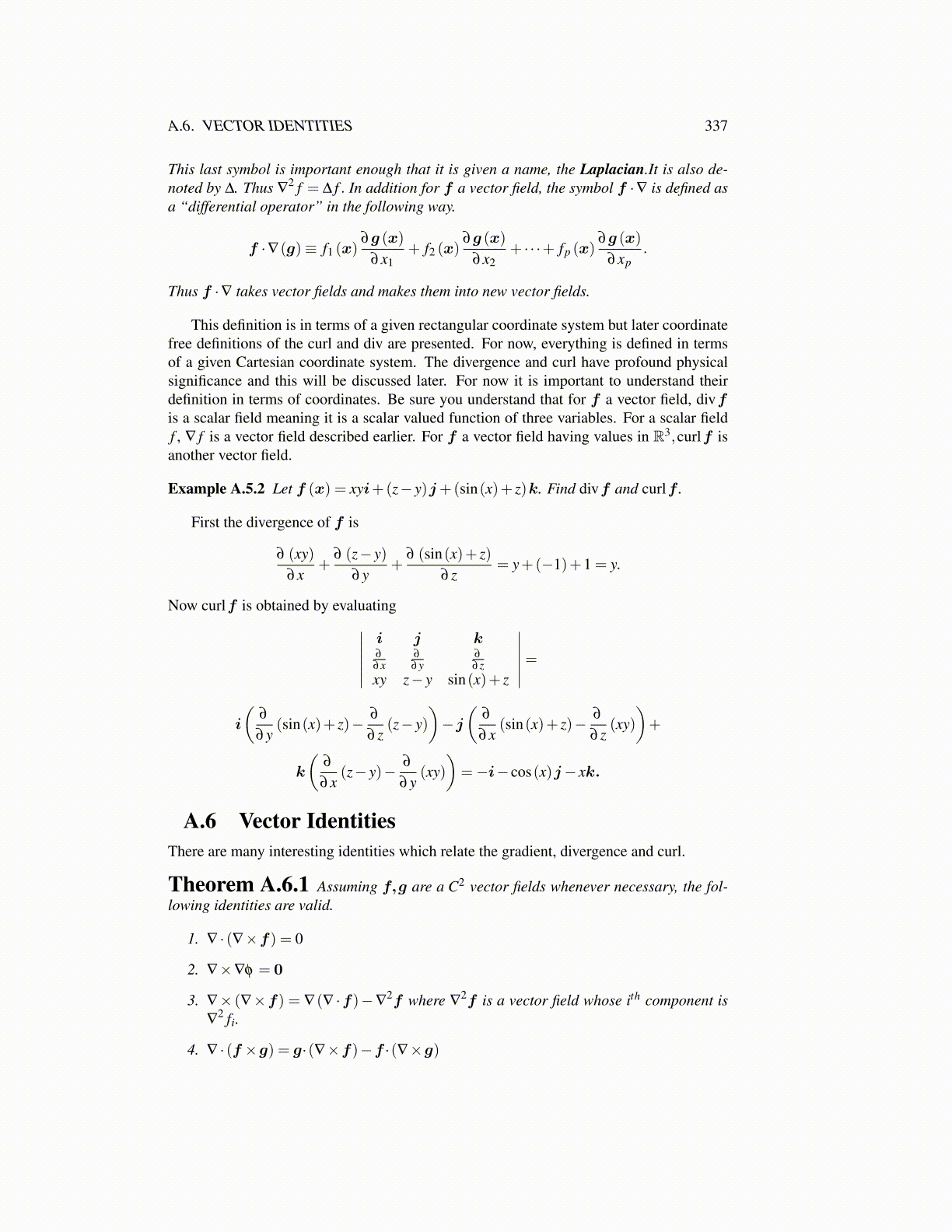
A.6. VECTOR IDENTITIES 337
This last symbol is important enough that it is given a name, the Laplacian.It is also de-noted by ∆. Thus ∇
2 f = ∆ f . In addition for f a vector field, the symbol f ·∇ is defined asa “differential operator” in the following way.
f ·∇(g)≡ f1 (x)∂g (x)
∂x1+ f2 (x)
∂g (x)
∂x2+ · · ·+ fp (x)
∂g (x)
∂xp.
Thus f ·∇ takes vector fields and makes them into new vector fields.
This definition is in terms of a given rectangular coordinate system but later coordinatefree definitions of the curl and div are presented. For now, everything is defined in termsof a given Cartesian coordinate system. The divergence and curl have profound physicalsignificance and this will be discussed later. For now it is important to understand theirdefinition in terms of coordinates. Be sure you understand that for f a vector field, divfis a scalar field meaning it is a scalar valued function of three variables. For a scalar fieldf , ∇ f is a vector field described earlier. For f a vector field having values in R3,curlf isanother vector field.
Example A.5.2 Let f (x) = xyi+(z− y)j+(sin(x)+ z)k. Find divf and curlf .
First the divergence of f is
∂ (xy)∂x
+∂ (z− y)
∂y+
∂ (sin(x)+ z)∂ z
= y+(−1)+1 = y.
Now curlf is obtained by evaluating∣∣∣∣∣∣i j k∂
∂x∂
∂y∂
∂ zxy z− y sin(x)+ z
∣∣∣∣∣∣=i
(∂
∂y(sin(x)+ z)− ∂
∂ z(z− y)
)−j
(∂
∂x(sin(x)+ z)− ∂
∂ z(xy)
)+
k
(∂
∂x(z− y)− ∂
∂y(xy)
)=−i− cos(x)j− xk.
A.6 Vector IdentitiesThere are many interesting identities which relate the gradient, divergence and curl.
Theorem A.6.1 Assuming f,g are a C2 vector fields whenever necessary, the fol-lowing identities are valid.
1. ∇ · (∇×f) = 0
2. ∇×∇φ = 0
3. ∇× (∇×f) = ∇(∇ ·f)−∇2f where ∇
2f is a vector field whose ith component is∇
2 fi.
4. ∇ · (f ×g) = g·(∇×f)−f ·(∇×g)